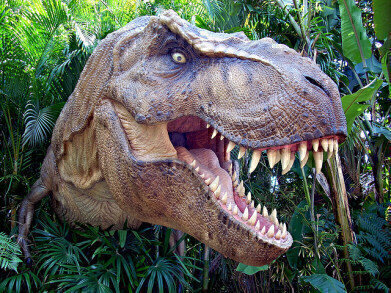News
Largest Dinosaur Site in Scotland Discovered
Dec 10 2015
Move over Nessie. Scotland’s got a new prehistoric infatuation, and it’s located in the heart of the Isle of Skye. Renowned as one of the world’s most rugged and remote locations, the Scottish island is now home to the country’s largest dinosaur site.
Earlier this month researchers uncovered tracks the size of dustbin lids, theorising that they were created by dinosaurs that roamed the earth millions of years ago. So what beasts were responsible for the prints? According to on-site palaeontologists the ancient tracks come from sauropods that lived during the Jurassic period. Gentle and herbivorous, sauropods are distant relatives of their brontosaurus and diplodocus counterparts.
“It’s a cool thing for Scotland to have such a big dinosaur site and it’s important globally, because these are from a time in the middle of the Jurassic where there are hardly any fossils anywhere else,” says Steve Brusatte, lead palaeontologist on the Skye expedition.
University researchers uncover prehistoric prints
Researchers from Edinburgh University were the first to spot the prints, honing in on an unusual pattern that zigzagged across a slab of rock located on the north eastern tip of the island. They counted hundreds of tracks, making it Scotland’s biggest dinosaur site. Amazingly, they’ve remained undiscovered until now due to high tides and seaweed deposits that cover the area for most of the year.
“My colleague Tom Challands and I were walking back to the vehicles when we noticed this big depression in the rock, like a pothole half a metre wide. We looked at each other, and then saw another and another in a zigzag pattern,” recalls Brusatte. “Both of us had seen similar things before in other parts of the world and we knew they were dinosaur footprints.”
Gentle giants roaming Skye
So how old is old? Brusatte and his team estimate that the tracks are around 170 million years old. While they would have originally been tramped into the bottom of a brackish lagoon, today they’re well and truly cemented into the rocky outcrops that fringe the Isle of Skye. For palaeontologists the discovery represents a fascinating new opportunity to uncover the secrets of the giants that roamed the world during the Jurassic period.
“We can start to think about what these dinosaurs were like as living animals and it’s a weird thing, maybe, to think of them wading around in a lagoon,” said Brusatte. “These dinosaurs would have been walking in some water, not really deep water, but maybe knee deep or a little less.”
Science plays a pivotal role in helping palaeontologists unearth the enigma of dinosaurs. ‘Proteomics, Genomics & Microarrays - Spotlight - Mass Spectrometry Analysis of Dinosaur Fossils Strengthens Evolutionary Linkages’ looks at the possibility of obtaining protein or DNA sequences from fossilised bones, and using the results to identifying a relationship between the protein fragment sequences of dinosaurs and birds.
Image via Flickr Creative Commons. Credits: Scott Kinmartin
Digital Edition
Lab Asia Dec 2025
December 2025
Chromatography Articles- Cutting-edge sample preparation tools help laboratories to stay ahead of the curveMass Spectrometry & Spectroscopy Articles- Unlocking the complexity of metabolomics: Pushi...
View all digital editions
Events
Jan 21 2026 Tokyo, Japan
Jan 28 2026 Tokyo, Japan
Jan 29 2026 New Delhi, India
Feb 07 2026 Boston, MA, USA
Asia Pharma Expo/Asia Lab Expo
Feb 12 2026 Dhaka, Bangladesh



















